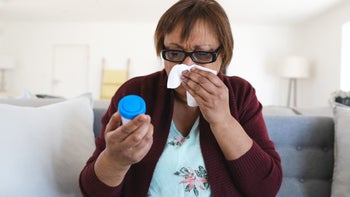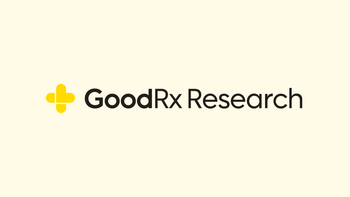
Over 800 Prescription Medications Got More Expensive in January 2022
Key takeaways:
In January, 810 medications increased in list price by an average of 5.1%. This is just shy of the number of medications that increased in list price last year — which was the largest number to date.
Of these drugs, 791 were brand drugs, 19 were generics, 199 were specialty drugs, and 84 were healthcare practitioner-administered drugs — drugs you can only get under the supervision of a provider.
These list price increases trickle down to patients, especially when a patient purchases a medication without insurance or with a high-deductible health plan.

Drug manufacturers are not slowing down with price increases this year, even as the pandemic persists. This January, manufacturers raised the prices of over 800 brand and generic medications.
These January price increases have become typical for manufacturers. Since 2014, we have seen a jump in the GoodRx List Price Index at the beginning of every year. Manufacturers often raise their prices in July, too.
Last month, manufacturers made 810 price hikes. That was on par with last January’s 832 price hikes but a significant jump compared to fewer than 700 increases in January 2020 and 2019. Prices this January also increased by an average of 5.1% — half a percentage greater than last year.
Digging deeper into the prices, we found that 791 brand drugs increased in cost by an average of 4.9% and 19 generic drugs increased in cost by an average of 12.6%. Price increases this year were also more spread out than years past. The first price hikes were on December 29, and the final five increases were on January 31.
Of note, more specialty and healthcare provider-administered medications increased in price this January than years past. Speciality drugs are usually already some of the most expensive drugs on the market, so these increases can be especially painful.
Which drugs went up in price this January?
From December 29, 2021 to January 31, 2022, 155 manufacturers raised drug prices.
This included price hikes for some of the most commonly prescribed medications, such as:
Ventolin, an asthma treatment
Levoxyl, a thyroid hormone
Prilosec, an ulcer treatment
Cozaar, a high blood pressure drug
Prescription drugs that top the GoodRx most expensive drugs list weren’t spared from increases, either. Takhzyro, Myalept, Juxtapid, and Cinryze all already cost over $40,000 a month, and all four became more costly this January.
All 10 of the most expensive popular brand drugs increased in price this January, as well. This includes popular brand-only medications, such as:
Humira raked in over $17 billion in 2021 for its manufacturer, AbbVie. And with few alternative options for patients, a 7.4% increase in the drug could price out many consumers who rely on it.
Many medications that went up in cost this January have seen steadily higher price tags over the last 3 years. Close to 60% of the drugs that increased in price this year also increased in price in January 2020 and January 2021.
How do list price increases affect consumers?
List prices may seem rather removed from consumers. After all, drug manufacturers typically negotiate rebates on their list prices, and as a result, those with insurance rarely pay the full list price. But list price increases do affect consumers, especially those with high-deductible health plans or without insurance altogether.
According to GoodRx research, since 2014, 89% of list price increases have led to increases in what retail pharmacies pay for prescription medications (also known as the National Average Drug Acquisition Cost). The increases in pharmacy costs were as high or higher in magnitude than the list price increases themselves. Over that same time period, 47% of list price increases have led to cash price increases for consumers that were as high or higher in magnitude than the list price increases.
List price increases are typically passed down to patients in the form of higher insurance costs. When a manufacturer raises the price of a medication, the insurance provider likely has to pay more for that drug. They can make up the cost by raising premiums, increasing copays, or placing the drug on a higher tier in insurance plans — which means the patient ends up paying more out of pocket for it.
Co-contributors: Sara Kim, MS, Jeroen van Meijgaard, PhD, and Tori Marsh, MPH
Methodology
All of these prices are based on the list price — the price of a drug that is set by the manufacturer. Few patients actually pay this price because they are typically shielded by their health insurance. But the list price is still a good proxy for the price of a drug. In essence, rising list prices lead to rising out-of-pocket costs for patients.
This analysis tracks all drugs in our list price index as of January 31, 2022, excluding over-the-counter drugs. It represents the drugs that are typically dispensed at a retail pharmacy.
All percent increases are by drug name, containing all linked NDC in our data. The percent increase in our live updates post represents percent increase by drug ID, a GoodRx drug identifier defined as the unique ID of NDCs by form strength and drug name.





























